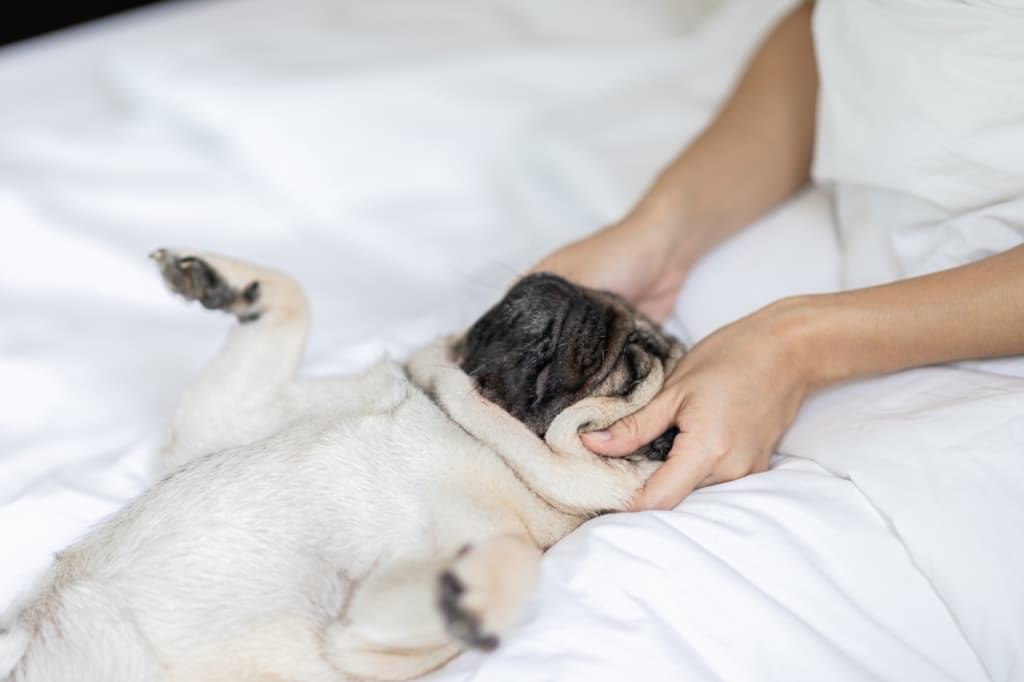Massages are very beneficial for your pet, and you don’t need to be a veterinarian or a specialist to give one to your dog. With a little practice, you can easily relieve the arthritic pains of a creaky old companion or loosen the knotted muscles of a frisky canine. Creatures of all ages can benefit from a good massage!
Reason #1
Massages improve blood circulation and facilitate the movement of nutrients through the system while eliminating toxins that may have accumulated in your pet’s organism.
Reason #2
Massages are a very effective diagnostic tool. When massaging, pay attention to all reactions on the part of your pet. Any apparent difficulty with being touched in familiar ways may point to an infection or disease of some kind. If you notice a change in its behaviour, this may prompt you to consult a veterinarian more quickly and thus spare your dog unnecessary suffering.
Reason #3
A number of studies show that your pet appreciates your touch as much as any favourite food. Your caresses may even have a placebo effect during periods of canine illness.
How to massage your dog?
There are a number of massage techniques. Some of them require advanced anatomical knowledge or require movements that are similar to acupressure. We’ll leave these methods to specialists and instead use a basic technique that only requires a three-finger touch.
Step 1
Start the session when your dog is calm, after a long walk for example. If you want, you can put on relaxing music to mask any surrounding noises that might serve as a distraction.
- Start the massage session with some light brushing or by petting in the same direction as the fur with the palm of your hand, talking gently all the while.
- Proceed from the top of the head to the end of the tail.
- To help establish a good rhythm, you can count from 1 to 15.
- This step usually takes between 2 and 5 minutes.
- If you see that your dog is uncomfortable, you should immediately end the session.
- Don’t rush; always be soothing and offer a treat. After all, you can always try again another day!
Step 2
Once your petting or brushing session is over, you can start massaging your dog’s back.
- As described above, use only your thumb and the two adjacent fingers.
- Place your left hand on your pet if you’re right-handed and the opposite hand if you’re left-handed. This hand, so positioned, will be the “reassuring” hand for the duration of the massage.
- Now, with your right hand, lift the skin and knead it gently by rolling it between your first two fingers and your thumb.
- Go over your dog’s back in this way two or three times.
Step 3
Head and jaw massage:
- Start at the base of the skull and still using your thumb and index finger, gently massage this area by making circles of greater or lesser size.
- If your dog clearly tolerates being touched this way, you can apply slightly more pressure by decreasing the size of the circles to massage the muscles in more depth.
- Move back up to the top of the head.
- The jaw and the back of the ears are more sensitive areas, so massage them carefully. For example, instead of using your thumb, you can use the first three fingers of your hand.
- Devote one to two minutes to each of these areas.
Step 4
You can now move on to your pet’s hips, legs, and abdomen. Take your time and don’t forget to listen to your dog. In case of doubt, always consult your veterinarian, the only specialist who can provide sound advice.
Our wish is for you to spend moments of total complicity with your dog. You certainly deserve it!





